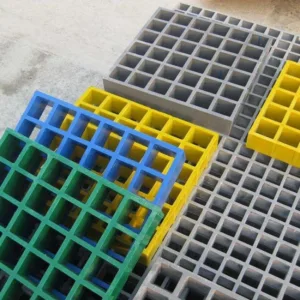Fiberglass grating, also known as FRP (Fiber-Reinforced Plastic) grating, is a composite material made from fiberglass and resin. This material is popular in various applications because it’s strong, lightweight, and resistant to corrosion. When it comes to the “weight rating” of fiberglass grating, it refers to how much weight the grating can support over a specific area without failing.

fiberglass grating weight rating
The weight rating of fiberglass grating can vary based on several factors:
- Thickness of the Grating: Thicker grating generally can support more weight.
- Grating Design: The pattern and size of the openings in the grating can affect its strength.
- Type of Resin Used: Different resins can provide different levels of strength and durability.
- Reinforcements: Additional materials or techniques used in the manufacturing process can enhance strength.
Manufacturers usually specify the load rating for their fiberglass grating products. This is often given in terms of pounds per square foot (psf) that the grating can support. In settings where the grating needs to support heavy loads, such as industrial platforms or walkways, it’s crucial to consult these ratings to ensure safety and compliance with regulations.
To ensure the safety and appropriateness of fiberglass grating for a specific application, it is important to consult technical specifications from the manufacturer or seek advice from a qualified engineer, like Unicomposite. These professionals can help determine the suitable type and specifications of fiberglass grating based on the expected loads and environmental conditions.




























